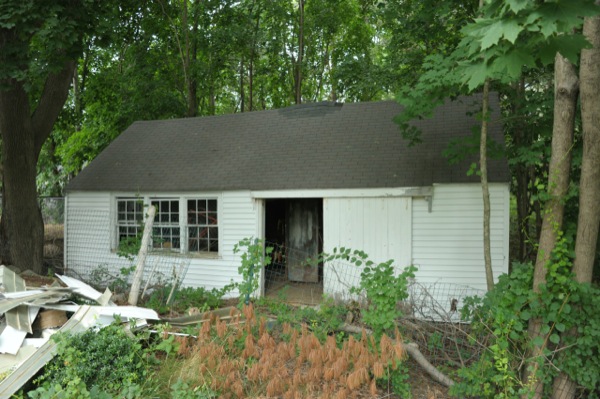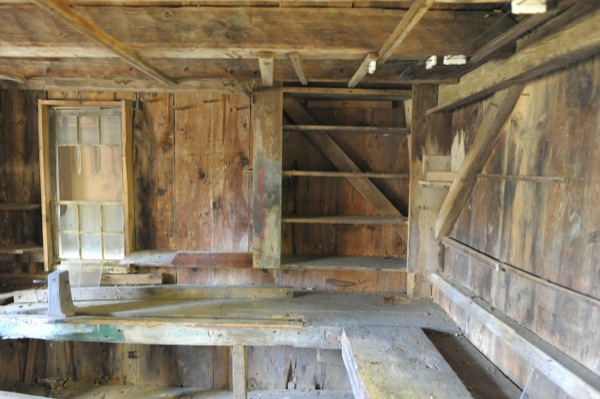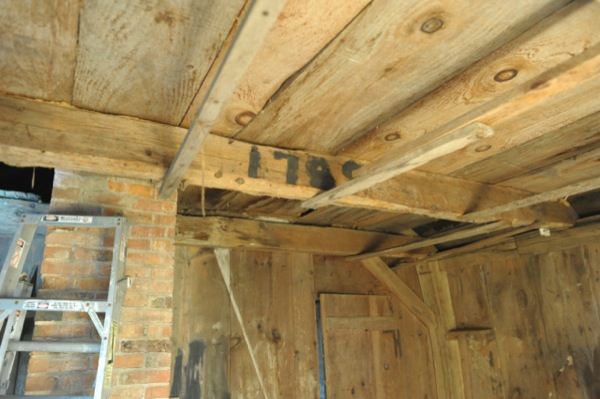Extraordinary discovery
UD professor involved in exploration of rare 18th century woodworking shop
2:14 p.m., Dec. 6, 2012--A group of trained professionals knew this discovery was equivalent to finding a needle in a haystack. Make that a needle kept in good condition, in a haystack the size of the United States.
After the discovery of an original 18th century woodworking shop on the site of a preschool in Duxbury, Mass., several experts in the material culture field traveled to see the shop for themselves.
Research Stories
Chronic wounds
Prof. Heck's legacy
“I said ‘holy cow!’” said Ritchie Garrison, professor of history and director of the Winterthur Program in American Material Culture at UD, as he remembered his first reaction to the woodworking shop.
“The first time I saw it, I about fell over,” said Garrison. “It was a bit like walking into the past.”
Craftsmen, called joiners, used the workshop in the 18th century for skilled woodwork. Many of the original workbenches and structures are still fully intact and in remarkably good condition, according to Garrison.
An accidental find
Garrison was in the process of revamping his own 19th century house in Plymouth, Mass., with his friend and contractor, Michael Burrey.
Burrey was also working on another project at a local preschool at the same time, where he happened upon the joiner’s shop.
Recognizing the rarity of the structure, Burrey contacted Garrison to come see for himself.
“I kind of assumed it would be a 19th century shop, which are not quite as rare,” said Garrison.
However, immediately upon inspection, Garrison knew the woodworking shop was something special.
He believes the shop could be one of the oldest in the country, especially if the date painted on the building — 1789 — is accurate.
Clues of the past
Although the preschool used the workshop as a shed, they managed to keep it in remarkably good shape.
All the original features in the workshop allowed Garrison and others to make inferences about those who worked there.
Records show the workshop belonged to a master carpenter named Luther Sampson. In the 18th century, master carpenters oversaw entire projects, according to Garrison.
Garrison invited prominent friends and colleagues in the material culture field to come observe the building and piece together the historical significance.
“This is arguably one of the most important historical finds of my lifetime,” said Garrison. “The important question is, ‘How do we become historical stewards of the past?’”
Garrison explained how the workbenches inside the joiner’s shop displayed clues suggesting how the workers used them.
For instance, some benches were almost sawed to fragments while another was covered in paint, suggesting where different aspects of a woodworking project took place within the shop.
Garrison also found the evidence of a removed fireplace very telling.
“The fireplace told me that they were doing things that required warmth, such as using glue,” said Garrison after explaining that 18th century glue could not be used unless it reached a certain temperature.
In addition to offering information about the nature of 18th century woodworking, the building also provided clues about the local ecology and raw materials over 200 years ago.
Garrison’s current friend and former colleague, Bill Flynt, used a process called dendrochronology to identify the wood in the joiner’s shop as second or third generation wood, meaning New Englanders had already used and replanted copious amounts of trees by that time.
Possible preservation
While experts suggested the building could become a National Historic Landmark, Garrison said the push for preservation must come from the local community.
“You have to think about what works best for the school and the town of Duxbury,” he said. “Preservation is never as simple as it looks.”
As for Garrison, he will always preserve the memory of this rare find.
“It is so important and so interesting. It has been a real treat,” he said.
Article by Kelley Bregenzer
Photos courtesy of Ritchie Garrison













